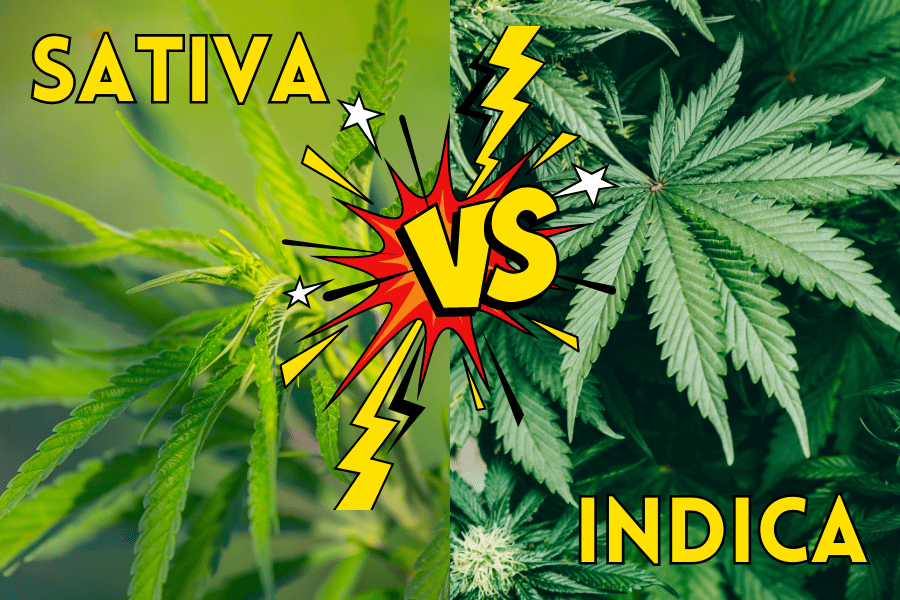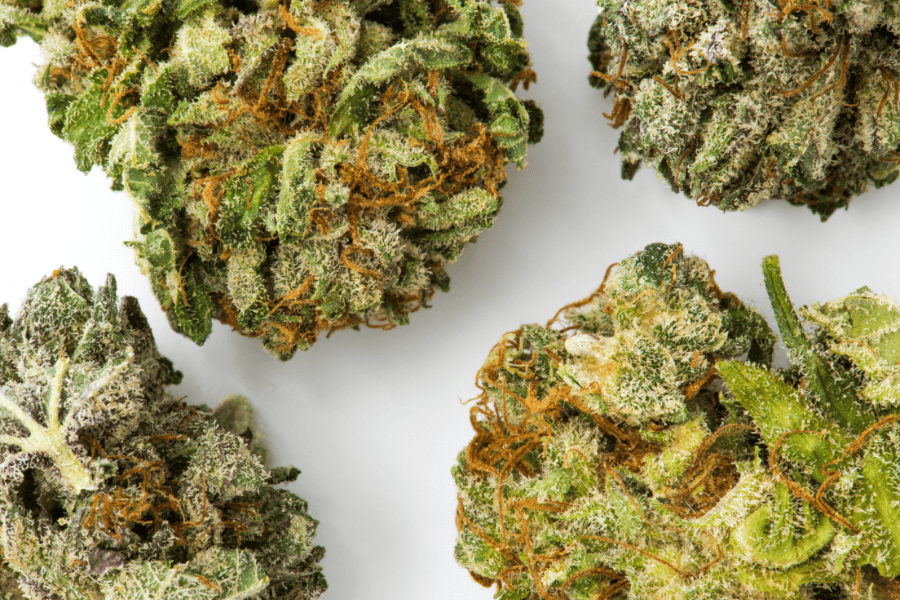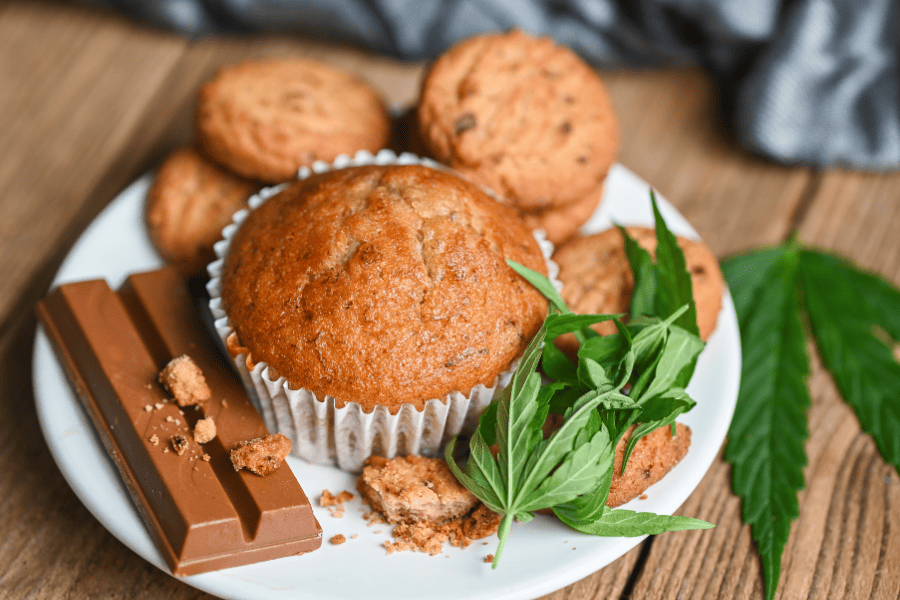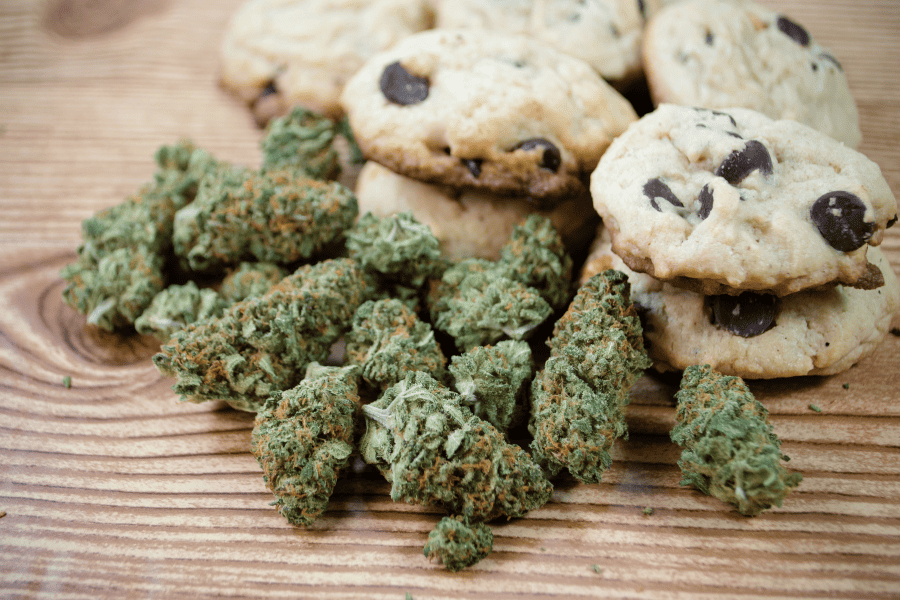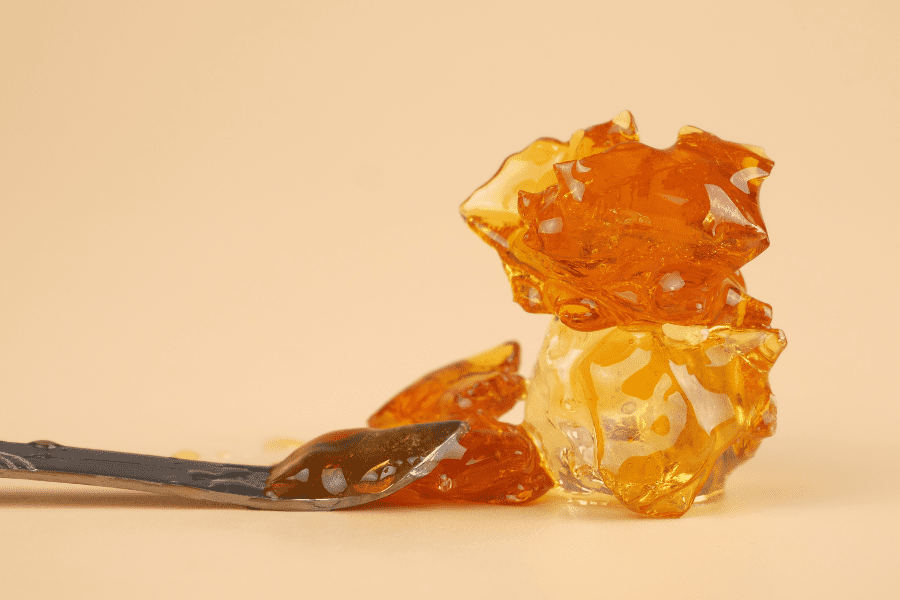Physical Appearance
Indica and Sativa plants have different physical characteristics. Indica plants are typically shorter and bushier than Sativa plants, with wider leaves and a more compact structure. Sativa plants, on the other hand, are taller and have a thinner, more elongated structure with narrow leaves.
When looking at buds alone there are some distinguishable differences. As Indica is denser, the structure of the bud is rounder and more full compared to Sativa. However, since there are a lot of hybrid strains sometimes it can be hard to determine whether your weed is Indica or Sativa just by looking at the buds. Sure, Sativa strains usually have longer and cylindrical buds, but this shape can also be found in hybrid strains which are not pure Sativa.
Smell
Indica strains are known for their earthy, skunky aroma, while Sativas tend to have a sweeter smell. The reason for the difference in smell is due to terpenes, which are molecules found in the cannabis plant that gives it the famous, distinct aroma. By simply smelling the fresh buds or smoke, you probably won’t be able to identify the type of strain.
Sativa strains are often high in limonene, a terpene responsible for the energizing effects of Sativa. Limonene is also found in citrus fruits, which explains why many Sativa strains have a fruity aroma. On the other hand, Indica strains typically contain terpenes like linalool and pinene, which have relaxing effects. Pinene is also found in pine needles and contributes to the earthy aroma of Indica strains.
Effects on the Body and Mind
Indica and Sativa strains have different effects on the body and mind. A general rule of thumb is that Indica strains are known for their relaxing and sedative properties, making them popular for nighttime use. While on the other hand, Sativa strains have energizing and uplifting effects, making them popular for daytime use.
Indica

As we already mentioned the effects of Indica strains are often associated with relaxation and a sensation of the “body high.” However, it’s important to note that this stereotype may not apply to every Indica strain. Commonly reported effects of using Indica strains include relaxation, pain relief, improved sleep, and a body high. Many individuals find Indica-dominant strains to be highly calming and prefer using them before bedtime. Keep in mind that the effects of consuming cannabis vary from person to person, thus you might not feel the same effects as your smoke buddy.
Top 3 Indica Strains:
Sativa

Sativa strains are known for their mood-enhancing and stimulating effects. Often described as uplifting and energizing, Sativa-dominant cannabis strains may enhance focus and concentration, making them popular for boosting productivity and creativity. People who consume Sativa strains often report feeling euphoric and experiencing a cerebral high. Again, the same with Indica, these effects may vary from person to person.
Top 3 Sativa Strains:
How Do Cannabinoids Work In the Body
THC is the active compound in both Sativa and Indica strains, and it’s the main reason why you feel “high” after consuming weed. The reason why THC is capable of producing such effects is due to its binding to cannabinoid receptors throughout the whole body. CB1 receptors found in the brain are the main target for THC, while CB2 receptors located in body tissues are also affected although far less.
Keep in mind that THC isn’t the only cannabinoid in the cannabis plant. For example, CBD possesses properties that are not psychoactive, but instead act as a pain reliever and reduce inflammation. Unlike THC, CBD does not bind to either the CB1 or CB2 receptors and instead is believed to modify the way THC interacts with these receptors, potentially reducing its effects and enhancing therapeutic properties.
While THC and CBD are the most well-known cannabinoids, there are other cannabinoids present as well, such as CBG, CBN, CBC, CBV, and many others which all contribute to the overall effects of the plant.
What About Ruderalis
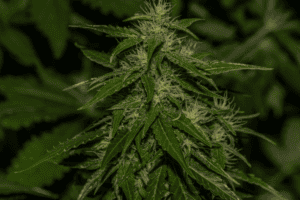
The third species of cannabis, Cannabis Ruderalis, is characterized by its unbranched and short stature, typically not exceeding two feet in height. These plants are considered auto-flowering, which means they can initiate flowering regardless of the amount of light they receive.
Although Ruderalis plants are rarely cultivated on their own, they are frequently hybridized with other cannabis strains to produce plants with auto-flowering capabilities. Ruderalis plants are known to contain low levels of THC and reportedly higher levels of CBD. Hybridization is often used to produce plants with unique characteristics. For instance, a grower may cross a THC-dominant Sativa plant with a Ruderalis to create a hybrid with both a high-THC profile and auto-flowering capabilities.
Final Word
The botanical properties of Cannabis sativa and Cannabis indica are definitely distinct. However, the anecdotal belief that sativa is more stimulating and indica is more calming is oversimplified. The scientific reality is much more complex, as the medical and recreational effects of cannabis are influenced by numerous chemical compounds.
To select the strain that is best suited to their needs, it is crucial to examine the biochemical content of each strain, rather than relying solely on the broad sativa/indica categorization. Even within specific strains, the amount of THC and other cannabinoids can vary significantly, indicating that individual strains may have different and unique effects.
